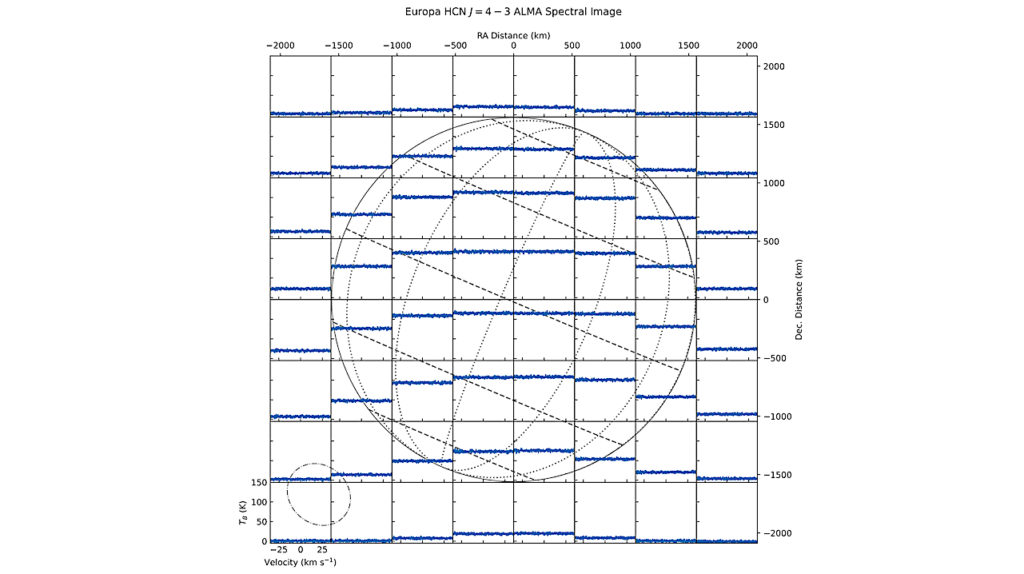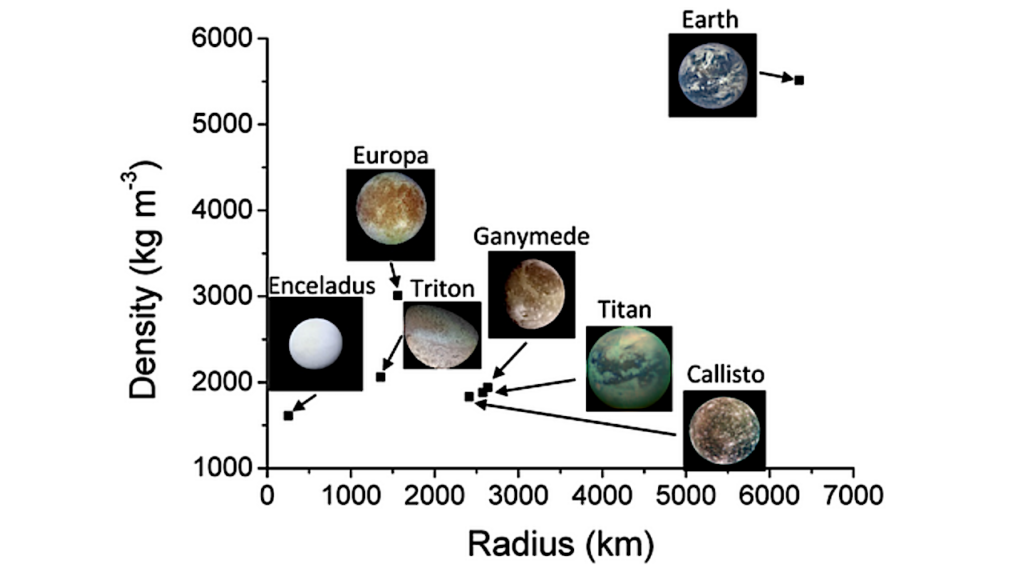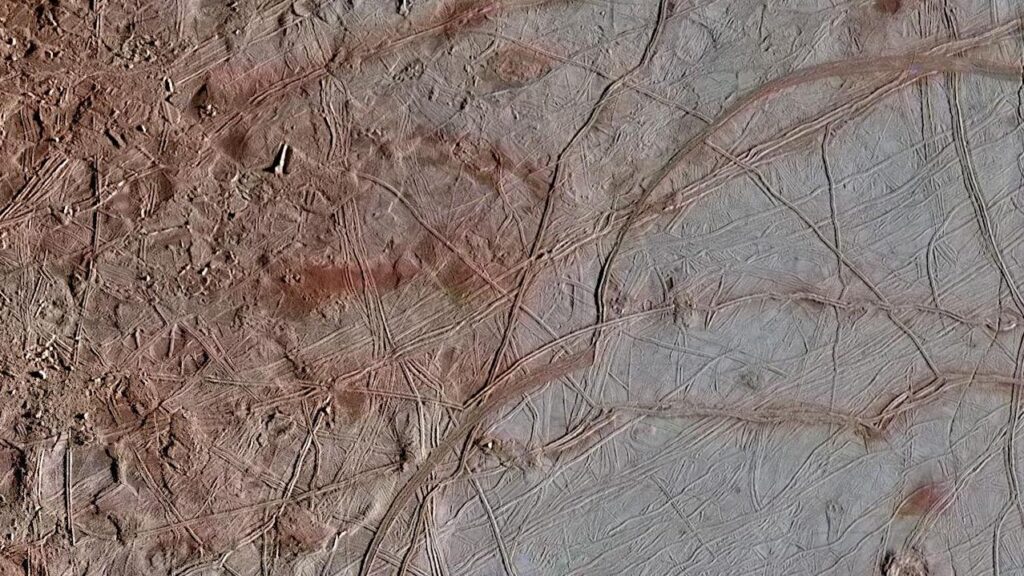Endogenic And Exogenic Contributions To Visible-wavelength Spectra Of Europa's Trailing Hemisphere

The composition of Europa’s trailing hemisphere reflects the combined influences of endogenous geologic resurfacing and exogenous sulfur radiolysis.
Using spatially resolved visible-wavelength spectra of Europa obtained with the Hubble Space Telescope, we map multiple spectral features across the trailing hemisphere and compare their geographies with the distributions of large-scale geology, magnetospheric bombardment, and surface color. Based on such comparisons, we interpret some aspects of our spectra as indicative of purely exogenous sulfur radiolysis products and other aspects as indicative of radiolysis products formed from a mixture of endogenous material and magnetospheric sulfur. The spatial distributions of two of the absorptions seen in our spectra — a widespread downturn toward the near-UV and a distinct feature at 530 nm — appear consistent with sulfur allotropes previously suggested from ground-based spectrophotometry.
However, the geographies of two additional features — an absorption feature at 360 nm and the spectral slope at red wavelengths — are more consistent with endogenous material that has been altered by sulfur radiolysis. We suggest irradiated sulfate salts as potential candidates for this material, but we are unable to identify particular species with the available data.
Samantha K. Trumbo, Michael E. Brown, Kevin P. Hand
Comments: 10 pages, 1 table, 5 figures, published in The Astronomical Journal
Subjects: Earth and Planetary Astrophysics (astro-ph.EP)
Journal reference: AJ, 160, 282 (2020)
DOI: 10.3847/1538-3881/abc34c
Cite as: arXiv:2012.11737 [astro-ph.EP] (or arXiv:2012.11737v1 [astro-ph.EP] for this version)
Submission history
From: Samantha Trumbo
[v1] Mon, 21 Dec 2020 23:10:56 UTC (6,637 KB)
https://arxiv.org/abs/2012.11737
Astrobiology








